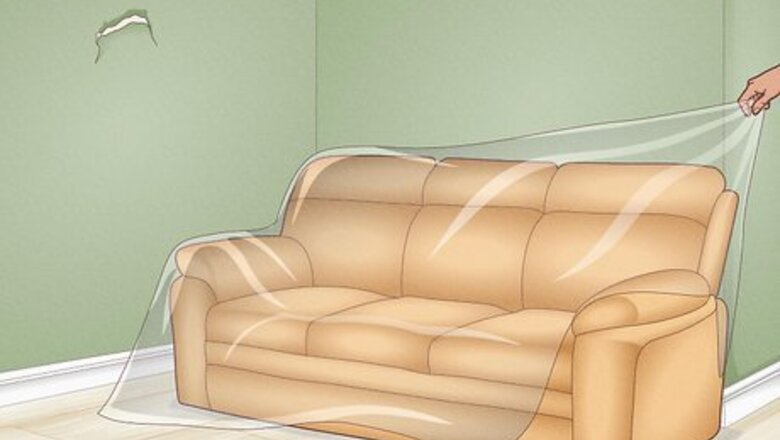
views
X
Expert Source
Patrick CoyePainting Specialist
Expert Interview. 22 July 2020.
Skim coating is so easy to do on your own and we’ve got everything you’ll need to know for your project. Keep reading, and we’ll walk you through how to skim coat a wall from start to finish!
- Repair holes and cracks in your walls, and lightly sand the surface if it has glossy paint. Clean your walls with a wet sponge to remove dust.
- Mix the joint compound to a yogurt-like consistency and apply it to a section of your wall with a roller. Smooth the compound out with a drywall knife.
- Sand your walls with 220-grit sandpaper when the joint compound is dry. Apply 1–2 additional skim coats for the smoothest texture.
Prepping Your Walls
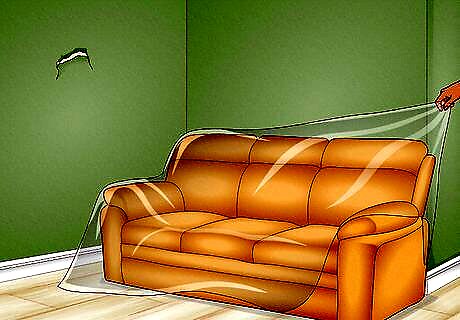
Cover furniture, woodwork, and floors with plastic sheets or drop cloths. Move all your furniture to the center of the room or out of the room completely. Spread your plastic sheets or drop cloths to protect your floor from any drips. Then, cover doorways and your woodworking with plastic sheets held in place with painters tape. Don’t forget to remove cover plates from light switches and wall sockets to keep them splatter-free.
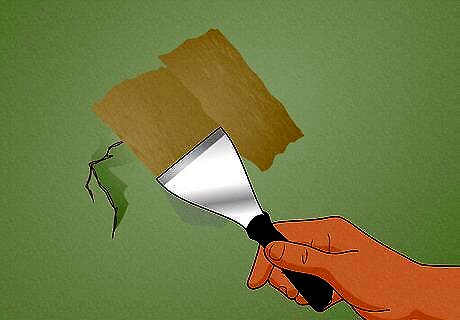
Fill in any holes or cracks in your wall with spackle. Pull out any nails or wall hangers on the wall where you’re applying the skim coat to. Use a putty knife to press the spackle into the holes, cracks, or nicks to repair your walls. Give the spackle about 1–2 hours to dry before moving on with your repairs. Any nicks, cracks, or large holes in your wall will show through your skim coat, so it’s important to repair them. If you’re doing a skim coat on plaster with cracks, apply joint tape over them to keep them from spreading. If you’re repairing holes larger than 1 inch (2.5 cm), then apply a drywall patch to fill it in.
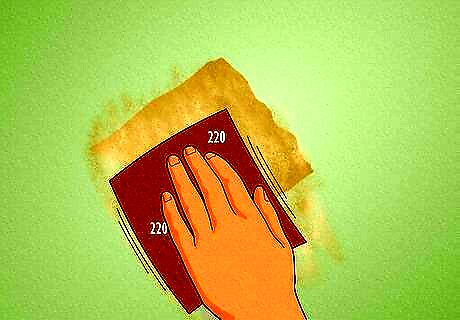
Sand your walls with 220-grit sandpaper if they have glossy paint. Lightly rub 220-grit sandpaper over the entire surface to scuff it up and remove the sheen from your walls. Skim coats work fine over any primer or matte paint, but glossy paint prevents them from sticking to the surface and may show through. It’s okay to apply a skim coat directly to drywall even if it doesn’t have paint or primer.
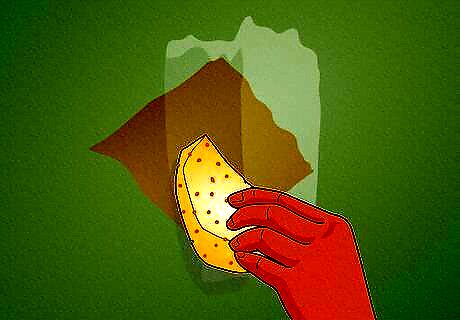
Clean your walls thoroughly. Use a damp sponge or towel to wipe down the surface and remove any dust or residue. If your walls have stuck-on grime or residue that you can’t remove with a sponge, apply a commercial surface-cleaning product like 409 and Pine-Sol before gently scrubbing the surface. Rinse the wall with clean water after using any cleaning product. For a powerful homemade cleaner, mix 1 cup (240 ml) of ammonia, ⁄2 cup (120 ml) of vinegar, and ¼ cup (68 g) baking soda with 1 gallon (3.8 L) of warm water.
Applying a Skim Coat

Mix joint compound with water until it has a yogurt-like consistency. Each joint compound has different mixing instructions, so follow the directions on the package. Pour the compound into a large bucket and slowly add water. Use an electric drill with a paint paddle attachment to mix the compound together, and gradually add water until there aren’t any solid lumps. Mix your compound in small batches since it could start drying out in the bucket before it can be applied. Check the drying time on the packaging so you know how much time you have to work with the compound you mixed. Mixing your own compound is best since it sets quickly between applications. If you’d rather not mix your own, get a pre-mixed compound and simply stir it up before using it.
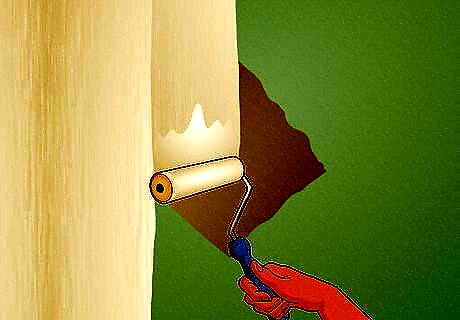
Apply the compound to a section of your wall with a paint roller. Pour the compound into a paint tray and load it onto your roller. Start with a 3 ft × 5 ft (0.91 m × 1.52 m) section of your wall and press the roller firmly against the surface. Apply firm, even pressure as you roll the joint compound up and down your wall. Rewet your roller in the compound when it dries out, and keep spreading it until you completely cover the section of wall. Start in one corner of the wall, and work down from the highest point. If you are skimming a ceiling, start at an edge and work towards the center. It’s okay if you apply a thick application of the joint compound since you’ll immediately smooth it out and remove the excess.
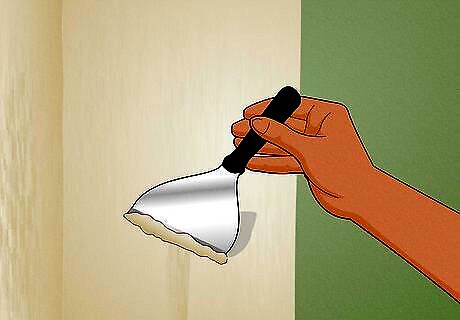
Smooth out the skim coat with a drywall knife. Hold your drywall knife along the leftmost edge of the section you just applied a skim coat to. Hold the left side of the knife slightly closer to the wall than the right side. Pull the knife straight down to smooth out the joint compound. Slightly overlap the area you just smoothed and continue working in columns across the section of your wall. You may try applying the compound with the drywall knife directly, but it can be a little tricky if you’re a beginner. Load the compound onto the knife, hold it at a 45° angle against the bottom of your wall, and then drag the knife straight up.
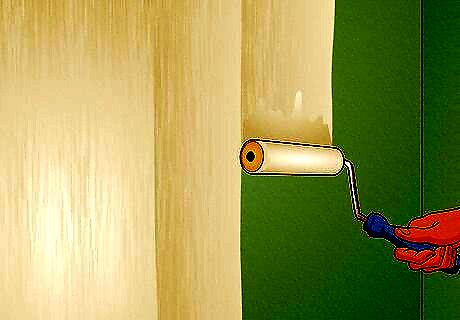
Continue applying the skim coat in sections across your wall. After you finish the first wall section, move on to the next part of your wall to apply the compound with your roller. Immediately after you apply it, follow up with your drywall knife to smooth out the surface. Keep working until you’ve applied a single coat of compound to your entire wall. Try to the first coat as smooth as possible so you don’t have to sand as much down later on between coats. Avoid applying compound in the middle of a section since it’s tougher to blend a dried section with wet compound can be difficult.
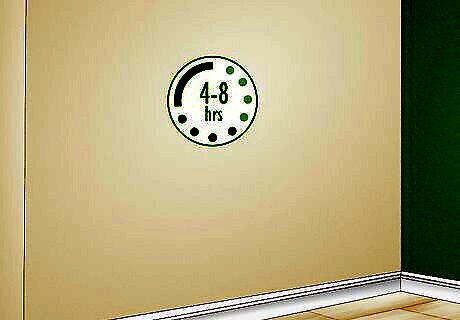
Let the first coat set for 4–8 hours, or overnight. Let the surface dry to the touch as soon as you finish applying it. While the coat will normally be dry enough for a second coat in about 4 hours, it may take a full day if the coat was thick or if it’s humid outside.
Adding Finishing Coats
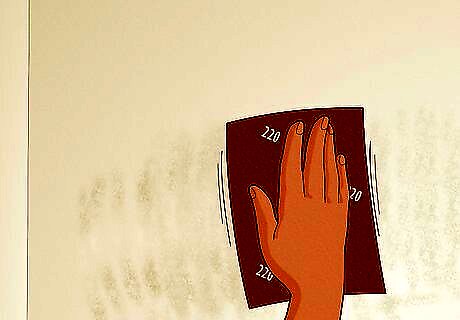
Sand the walls with 220-grit sandpaper. Run your sandpaper over any rough or raised edges on your wall to smooth them out again. If you have trouble seeing what parts of your wall have imperfections, shine a light from the side to light up your wall and show all of the low and raised spots. Wear a face mask and protective eye gear when you’re sanding since the dust could irritate your eyes or lungs.
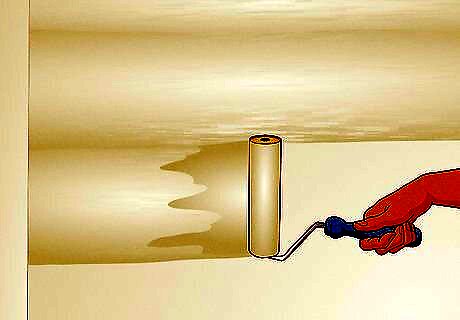
Apply a second layer of joint compound in the opposite direction. When you’re applying your second coat, roll the compound on horizontally so it’s perpendicular to the first coat. Work in small sections putting compound on and smoothing it out. Once you’ve coated the entire wall and it looks smooth, let it dry overnight. Run your hands over the surface once it’s dry to feel any imperfections you can't see with the naked eye.
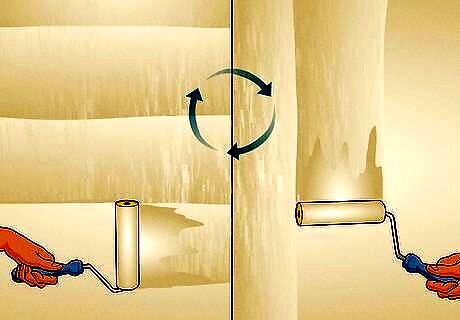
Keep adding new coats of mud until your wall looks smooth. Lightly sand your wall with your 220-grit sandpaper before each coat. Switch directions between coats from horizontal to vertical to ensure you get even coverage on your wall. Just make sure to let the compound dry overnight before applying the next layer. It usually takes 3–4 coats of joint compound to smooth out your wall completely. Clean the room thoroughly when you’re finished by vacuuming up residual plaster dust and wiping your floors with a wet cloth.
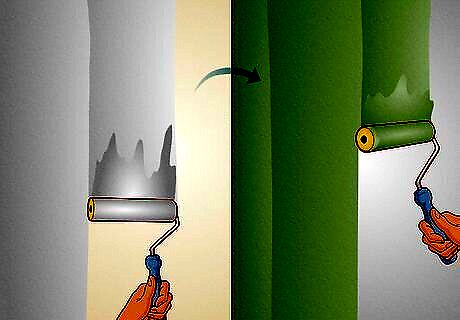
Put a coat of primer on your wall before painting it. Since joint compound and drywall absorb paint and hold color differently, apply a coat of primer onto the surface. Use a roller to spread a thin layer of primer over the wall. Allow the primer to dry for a few hours before applying a second coat so the drywall surface and compound are completely covered.













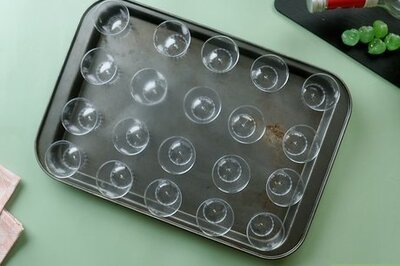


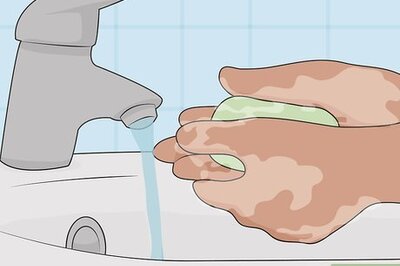


Comments
0 comment